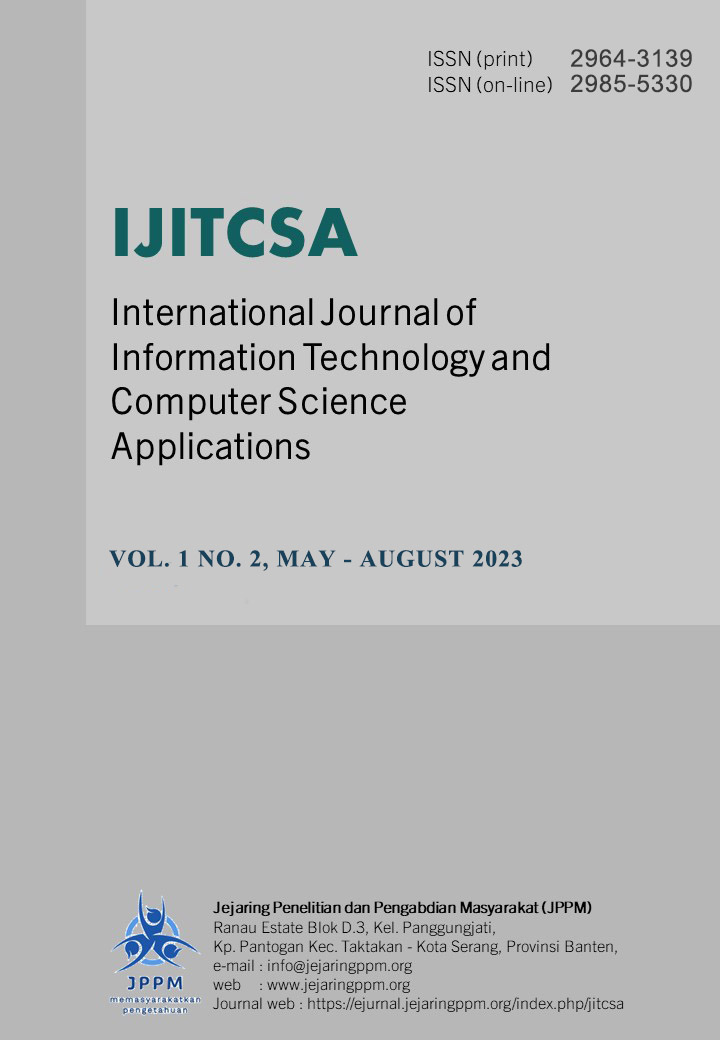Using the Service Quality approach, an analysis of customer satisfaction in early childhood education at Bina Mulia
DOI:
https://doi.org/10.58776/ijitcsa.v1i2.35Keywords:
Service quality, satisfaction, service, customersAbstract
Kindergarten is an early childhood education facility, Bina Mulia Cibitung strives to attract and keep clients, specifically parents and guardians of students, by raising the standard of service in all areas. Increased customer satisfaction and trust, in this example from the person or guardian of pupils, are anticipated benefits of better service quality. Customers will be satisfied when their needs, wants, and expectations are met or exceeded during a transaction, leading to continued loyalty. Customer satisfaction is defined by research in this paper as a customer's reaction to a difference between the prior degree of importance and the actual performance he perceives after use. A service quality technique is used to gauge how satisfied customers are (customer satisfaction). This strategy makes use of a questionnaire as a tool to help determine what the customer's expectations are as well as their desires and impressions. Additionally, the difference between expectations and perceptions is used to gauge the quality of a service. Customer impressions of the service they actually receive and the service they expect can be compared to determine service quality.
References
M. Anggray, W. Darini, A. Hartiati, and A. S. Wiranatha, “PELAYANAN DENGANMENGGUNAKAN METODE IMPORTANCE PERFORMANCE ( Studi Kasus di Angkringan JinggoBu Jero , Kediri Tabanan ),” vol. 5, no. 4, pp. 61–70, 2017.
J. O. Ong and J. Pambudi, “IMPORTANCE PERFORMANCE ANALYSIS DI SBU LABORATORYCIBITUNG PT SUCOFINDO ( PERSERO ),” vol. IX, no. 1, pp. 1–10.
M. Khaerudin, J. Warta, and D. B. Srisulistiowati, “Manajemen Pengetahuan Salah Sebagai Satu JalanDalam Pengembangan Lembaga Pendidikan Unggul Pada Tk Bina Mulia Cibitung,” vol. 1, no. 2, pp. 159–172, 2020
J. Akuntansi, D. Pranitasari, and A. N. Sidqi, “Analisis Kepuasan Pelanggan Elektronik ShopeeMenggunakan Metode E-Service Quality dan Kartesius,” vol. 18, no. 02, pp. 12–31, 2021.
N. R. Andayani, P. N. Batam, and P. N. Batam, “ANALISIS KEPUASAN PELANGGANTERHADAP KUALITAS,” vol. 3, no. 1, pp. 119–131, 2019.
A. P. Anindya et al., “ANALISIS KEPUASAN PELANGGAN DE LAUNDRY DENGANMENGGUNAKAN METODE CUSTOMER SATISFACTION INDEX,” vol. 7, no. 2, pp. 129–136, 2021.
I. U. Putri et al., “Farmaka Farmaka,” vol. 16, no. 1997, pp. 195–204, 2018
W. Agustiawan and A. Purnamasari, “A Decision Support System for Determining the Best CustomerUsing the Simple Multi-Attribute Rating Technique ( SMART ),” vol. 1, no. 1, pp. 58–65, 2023
Budiman, A., Yulianto, E., & Saifi, M. (2020). Pengaruh E-Service Quality terhadap E-Satisfactiondan E Loyalty nasabah pengguna mandiri online. Jurnal Profit, 14(1).
Permana, H., & Djatmiko, T. (2018). Analisis Pengaruh Kualitas Layanan Elektronik (E-Service Quality)Terhadap Kepuasan Pelanggan Shopee di Bandung. Sosiohumanitas, 20(2), 64–78.https://doi.org/10.36555/sosiohumanitas.v20i2.112
Downloads
Published
How to Cite
Issue
Section
License
Copyright (c) 2023 Muhammad Khaerudin Khaerudin

This work is licensed under a Creative Commons Attribution 4.0 International License.
Attribution 4.0 International
You are free to:
- Share — copy and redistribute the material in any medium or format for any purpose, even commercially.
- Adapt — remix, transform, and build upon the material for any purpose, even commercially.
- The licensor cannot revoke these freedoms as long as you follow the license terms.
Under the following terms:
- Attribution — You must give appropriate credit , provide a link to the license, and indicate if changes were made . You may do so in any reasonable manner, but not in any way that suggests the licensor endorses you or your use.
- No additional restrictions — You may not apply legal terms or technological measures that legally restrict others from doing anything the license permits.
Notices:
You do not have to comply with the license for elements of the material in the public domain or where your use is permitted by an applicable exception or limitation .
No warranties are given. The license may not give you all of the permissions necessary for your intended use. For example, other rights such as publicity, privacy, or moral rights may limit how you use the material.





